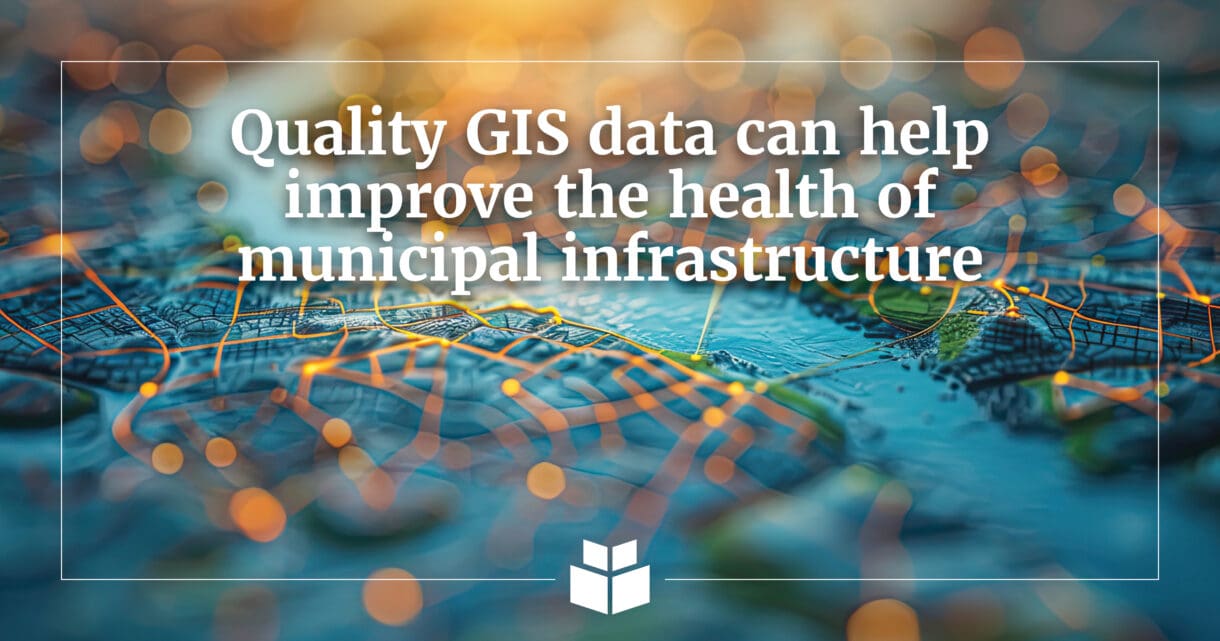
GIS, or Geographic Information Systems, data can unlock a world of possibilities for municipalities. A significant and tangible benefit of quality GIS data is a better understanding of the health of your infrastructure in the field, and the ability to develop a roadmap to maintain and improve your assets in the present and future.
Whether you want to know more about the condition of stormwater or sewer lines, or the soundness of the infrastructure that comprises your water system, having a solid foundation of GIS data can make all the difference.
Understanding your infrastructure in real-time
Mark Smith, GISP, is WithersRavenel’s GIS Manager. He’s worked with municipalities of varying sizes throughout the state. Some small towns have virtually no stored GIS data, and he’s helped them begin to build their knowledge base through as-built drawings of infrastructure.
“We can scan in drawings and begin to build up their GIS system,” Mark says. Once the system is created, “then you can springboard into different options because you’ll know pipe sizes, material and install dates. You get a good idea about what’s out there, and the age of your infrastructure.”
Field assessments of that infrastructure are not only useful for filling gaps in data, but also offer real-time understanding of assets. GIS platform capabilities can allow municipal clients to see infrastructure conditions in real-time while WithersRavenel team members gather field data.
Mark spoke about clients who wanted to know more about their stormwater infrastructure. As crews surveyed and inventoried assets, problems with culverts and manholes were identified and communicated visually, and immediately. In one instance, a failing retaining wall that had gone unnoticed was identified. The road was closed and the structure was repaired. A key was the real-time GIS dashboard, which takes condition data provided by field staff and displays it for municipal staff.
Lindsay Thomas, GISP, is an Implementation Consultant and GIS Specialist at WithersRavenel. She works with our Technologies group to help clients better understand and manage their assets. She pointed out that having GIS data, as an example for water lines, can provide a quicker and more economical fix for a difficult problem.
“Say you have a water break, and you don’t have GIS on the water line section in question,” Lindsay said. “Then you have a hard time turning the water off and isolating that break. GIS allows you to work more efficiently when you do have a failure and be able to isolate a break and not end up losing hundreds of thousands of gallons of water.”
Proactively managing assets through GIS data
For Lindsay, an added benefit of GIS is being able to understand which parts of a community’s infrastructure are older and more likely to fail. This knowledge can inform the decision-making process, and help save money in short- and long-term scenarios.
“Some municipalities, their management plan is 100% reactive,” Lindsay said. “If it breaks, they go and fix it, and that’s all they plan for. So having that predictive side, using the GIS allows them to understand that five years from now we have a mile of pipes that are potentially going to fail. The community can budget for that and plan that work ahead of time.”
But what if a community is starting with no GIS data, and is daunted about the potential time and cost of assembling location, age and condition information for all their infrastructure? Lindsay says that GIS data work can be done in phases to align with budgets.
“You don’t have to go out and collect everything at once,” she said. “Start in the oldest parts of town where the infrastructure may be getting close to the end of its life. Then you have that predictive information, and you can grow the dataset from there. Or if a community has problem areas where they have a lot of breaks, that can be the starting point.”
Lindsay also spoke about planning in a Common Corridor™, WithersRavenel’s term for assets that overlap in the same area. “There’s nothing worse than a municipality going out and repaving a road and then having a water main break or a repair that was already planned and having to tear up that new road,” she said. “Being able to see all of their assets within that Common Corridor™ and planning accordingly can help then plan repairs together, saving time and money.”
“Having that holistic view and not a silo of each of their asset classes is important. That’s the direction a lot of people need to be moving in, but without the GIS it’s difficult.”
Using GIS data in real-time and for public outreach
Some communities may be thinking, but isn’t GIS expensive? And hard to use? Can it really help?
Esri is a global GIS network of services, and their basic ArcGIS online software provides an effective and affordable way for communities to store and understand their data. While the basic system is intuitive, WithersRavenel can help communities navigate ArcGIS; Esri provides tutorial aid as well.
“It’s transportable as a viewer to go into the field to assess infrastructure,” Mark says. “A client can talk to a member of the public, and access that same information you see on your desktop.”
The ArcGIS Utility Network Data Model: what local governments need to know
The benefits are real, with a creator’s license, desktop capabilities, and mobile licenses for fieldwork. “You can look at water mains and they can pull up data in the field at 3 in the morning. The information to solve problems is all in the palm of their hands.”
Mark sees the value of communicating GIS data to the public as a vital tool. “I used to go to public meetings where we laid out a paper map. It’s rudimentary and doesn’t fully answer the question,” Mark said. “You see improved public engagement and understanding through visualized data. You can customize the information, show the deficiencies and improvements made. Then you can pull up data at a Town Hall, in meetings, and highlight and share actual data.”
Funding value
More importantly though, WithersRavenel works with communities to help them improve their GIS data to make real-time decisions and plan for the future. Another partner in the GIS journey is the state of North Carolina, which offers funding to help municipalities tackle assessments and inventories of their infrastructure assets.
The options for water, sewer and stormwater include Asset Inventory and Assessment (AIA), Local Assistance for Stormwater Infrastructure Investments Program (LASII), and Lead Service Line Inventory (LSLI) and Lead Service Line Replacement (LSLR) funding. These programs are conducted through the North Carolina Department of Environmental Quality (NCDEQ). WithersRavenel has not only helped many communities secure funding through these programs, but also administered the grants and performed the technical GIS, inventory, assessment, and engineering work that builds an understanding of critical infrastructure assets.
As North Carolina continues to grow, getting a grip on your infrastructure’s condition and capacity is best accomplished through quality data. You can make decisions based on facts rather than emotions or politics. Do you want to start a discussion about GIS in your community? You can connect with Mark Smith at 919-238-0401 or msmith@withersravenel.com.


